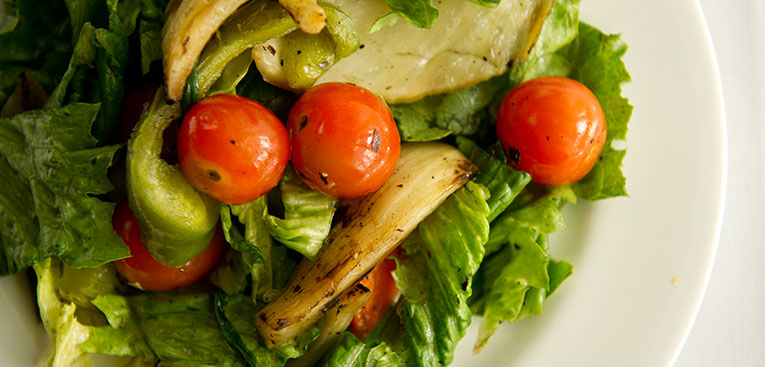The 6 Major Food Groups
Each of the food groups below has an important place in your diet every day. You’re probably familiar with the first five, but the last group may surprise you.
Download our Food Group Choices Chart for a handy list of nutritious foods in each group.
Whole grains and starchy vegetables
Choose whole grains rather than refined grains for greater nutrition and satisfaction from breads, cereals and cooked grains like pasta, rice and oatmeal. To identify whole grains, read the ingredient list. The word “whole” must precede the grain. We include starchy vegetables like potatoes in this group because they are similar to cooked grains in their macronutrient and calorie content.
Fruits and non-starchy vegetables
Boost your nutrition and feeling of fullness by rounding out meals and snacks with fresh vegetables and fruits. Most people have to make an effort to get the recommended amounts. To make it easier, keep your freezer stocked for convenience. Use whole fruit instead of juice to boost fiber intake. If you use canned products, try reduced-sodium vegetables and “no sugar added” fruits.
Dairy and non-dairy alternatives
This food group provides essential calcium and vitamin D. It’s also a good source of protein. Choose skim or 1% milk, calcium-fortified soy foods, reduced-fat cheeses and fat-free or low-fat yogurt.
Fish, poultry, meat, eggs and alternatives
A 3-4 ounce serving size of fish, meat or poultry at lunch and dinner provides more than enough protein for most people. Picture the size of a deck of cards. If you prefer a larger serving, choose a heart-healthy lean or very lean cut. Download our list of lean and high-fat choices to guide you. A serving of baked or broiled fish is recommended twice a week as a source of heart-healthy Omega-3 fat.
Heart-healthy oils
Liquid oils contain essential fatty acids, are heart-healthy and make an ideal complement to cooked vegetables and salad. They fall into two main categories:
- Polyunsaturated fat
- Omega 6 — Corn, safflower, sunflower and soybean oils
- Omega 3 — Cod liver oil, canola, flax seed oil, salmon, sushi, anchovies, sardines, and walnuts
- Monounsaturated fat
- Olive, canola and peanut oils
Omega-6 and omega-3 fats should work hand in hand for heart health. Balance out the high levels of omega-6 fats contained in processed foods by adding back omega-3 fats and substituting monounsaturated fats for omega-6 fats in cooking.
To get the benefits of oil without consuming too many calories, strive to measure oils in cooking and dilute oils in dressings or sauces with water, vinegars, citrus juices, etc. Nuts and seeds are rich sources of heart-healthy oils as well as protein and fiber. Sprinkle on salads, stir fries or hot cereals.
Elective or Discretionary Calories
Think of elective calories as elective classes. Once you’ve eaten enough of the healthy foods described above to meet your essential nutrient needs, you will have calories left over. Most people choose foods or beverages that provide pleasure over nutrition (like taking an enrichment class that has nothing to do with your major). But some people choose additional nutritious foods (like taking an extra class in your major). It’s your choice.
